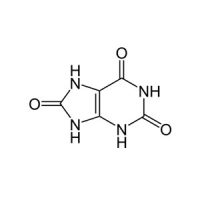(November 03, 2015)
Salimetrics’ innovative Salivary Uric Acid Enzymatic Assay facilitates non-invasive monitoring of Uric Acid levels for participant-centric research studies. Saliva as a biospecimen requires no needles, no phlebotomist, and is rapid, easy and economical.
Metabolic syndrome is becoming an ever more prevalent, chronic disease associated with many serious health issues (e.g., abdominal obesity, glucose intolerance, insulin resistance, dyslipidaemia and hypertension). A longitudinal epidemiological study (NHANES 1999-2002), demonstrated a strong link between serum uric acid and metabolic syndrome (3). The research indicates that people who suffer from metabolic syndrome may be at an increased risk of developing type II diabetes and coronary heart disease.
With the newly introduced Salimetrics Salivary Uric Acid Assay Kit, researchers will be able to elucidate the complex mechanisms and pathways related to uric acid’s influences on metabolic syndrome and its risk factors using only a drop of saliva. A strong uric acid serum to saliva correlation of 0.95 to 0.71 has been previously reported (1, 2), which ensures that the measurement of salivary uric acid is an effective biomarker. Decades of research shows that uric acid continues to have strong prognostic potential as an indicator of metabolic syndrome development (3-7) and current research has linked uric acid to oxidative stress, hypertension, and abdominal obesity (8-10).
Salimetrics provides the tools necessary to enable scientific research within this multi-disciplinary field, to further define metabolic syndrome and characterize the multitude of pathways involved. Salivary biomarkers offer a unique advantage over traditional blood sampling by providing researchers with additional opportunities to increase statistical power by maintaining strong participant participation and retention at lower operational costs. Additionally, the use of salivary biomarkers can be pivotal in developing effective clinical diagnostics and pharmaceutical treatments to better the lives of patients.
To learn more about Salimetrics Salivary Uric Acid Assay Kit or to connect to a Salimetrics representative, investigators can visit the Salimetrics website.
References:
- Cheng P, et al. (2013). Evaluation of dialysis in patients with end-stage renal disease by salivary urea, creatinine and uric acid. Zhong Nan Da Xue Xue Bao Yi Xue Ban. 38(12):1260-3.
- Xia Y, et al. (2012). Clinical significance of saliva urea, creatinine, and uric acid levels in patients with chronic kidney disease. Zhong Nan Da Xue Xue Bao Yi Xue Ban. 37(11):1171-6
- Ford ES, et al. (2007). Serum concentrations of uric acid and the metabolic syndrome among US children and adolescents. 115(19):2526-32.
- Ciarla S, et al. (2014). Serum uric acid levels and metabolic syndrome. Arch Physiol Biochem. 120(3):119-22.
- Oda E. (2014). Serum uric acid is an independent predictor of metabolic syndrome in a Japanese health screening population. Heart Vessels. 29(4):496-503.
- Jin JD, et al. (2007). Serum uric acid and leptin levels in metabolic syndrome: a quandary over the role of uric acid. Metabolism. 56(6):751-6.
- Choi HK, et al. (2007). Prevalence of the metabolic syndrome in individuals with hyperuricemia. Am J Med. 120(5):442-7.
- Lima WG, et al. (2015). Uric acid as a modulator of glucose and lipid metabolism. Biochimie. 116:17-23.
- Pingmuangkaew P, et al. (2015). Association of Elevated Serum Uric Acid with the Components of Metabolic Syndrome and Oxidative Stress in Abdominal Obesity Subjects. Indian J Clin Biochem. 30(3):286-92.
- Ságodi L, et al. (2015). Metabolic complications of obesity during adolescence in particular to elevated uric acid levels. Orv Hetil. 31;156(22):888-95.
- Chen D, et al. (2015). Cross-sectional and longitudinal associations between serum uric acid and metabolic syndrome: Results from Fangchenggang Area Male Health and Examination Survey in China. Clin Chim Acta. 15;446:226-30.
- Bonakdaran S, et al. (2014). Association of serum uric acid and metabolic syndrome in type 2 diabetes. Curr Diabetes Rev. 10(2):113-7.
About Salimetrics:
Salimetrics’ assay kits and CLIA-certified testing services are used to measure salivary analytes related to stress, behavior and development, inflammation, sleep, reproduction, health and immune function. Founded in 1998 by Douglas A. Granger, Ph.D., Salimetrics, LLC support CROs, pharmaceuticals, academic researchers and the immunodiagnostic industry around the world with innovative immunoassay products, non-invasive saliva collection methods, and laboratory testing services.
Read this article on PR Web
 Contact: Salimetrics (USA)
Contact: Salimetrics (USA)
